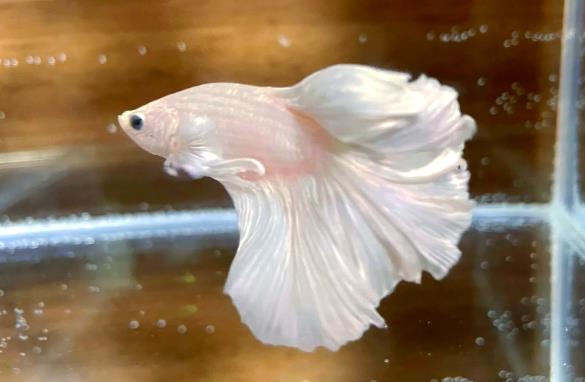How to Keep Your Betta Fish Tank Clean: A Complete Guide
Maintaining a clean betta fish tank requires a combination of physical cleaning, water quality management, and ecological balance preservation. Below are detailed methods to achieve this:

1. Basic Cleaning Steps
1.1 Water Change Procedure
Replace 10% to 25% of the tank water weekly. Let new tap water sit for 24 hours beforehand to allow chlorine to evaporate, and ensure the temperature difference between the new water and the tank water does not exceed 2°C (3.6°F).
Retain approximately 50% of the old tank water during water changes. Avoid complete water replacement, as this can cause severe stress to your betta.
1.2 In-Tank Cleaning
Wipe the tank walls with a soft brush or sponge. Never use soap or chemical cleaners—these residues are toxic to bettas.
Rinse the substrate (e.g., gravel or sand) with a fine-mesh sieve to remove fish waste and uneaten food. For decorations (e.g., rocks, artificial plants), gently rinse them in old tank water (not tap water) and let them air-dry before placing them back.
2. Water Quality Maintenance Tips
2.1 Optimizing the Filtration System
Choose an external filter (e.g., for a 50-liter tank, select a filter with a flow rate of 200–300 liters per hour). Clean the filter sponge regularly, but keep a small amount of old tank water on the sponge—this preserves beneficial nitrifying bacteria.
Add biological filter media (such as ceramic rings) to the filter. These media provide surface area for nitrifying bacteria to colonize, helping break down harmful substances like ammonia and nitrite.
2.2 Controlling Feeding & Stocking Density
Feed your betta 1 to 2 times daily, giving only as much food as it can finish within 5 minutes. This prevents uneaten food from decaying and polluting the water.
Follow the stocking guideline: Keep 2–3 cm of fish length per 10 liters of water. Overcrowding leads to excess waste and poor water quality.
3. Managing Ecological Balance
3.1 Cultivating Nitrifying Bacteria
When setting up a new tank or after large water changes, add nitrifying bacteria solution at 1.5 times the recommended dosage. Turn off UV sterilizers (if used) for 3–5 days to speed up bacterial colony establishment—UV light can kill beneficial bacteria.
3.2 Algae Control
Limit tank lighting to no more than 8 hours per day (use a timer for consistency) to prevent excessive algae growth.
Introduce algae-eating organisms: Add 5 cherry shrimp per 10 liters of water or a small school of otocinclus catfish (dwarf suckers). These creatures naturally consume algae without harming bettas.
4. Emergency Handling
4.1 Cloudy Water
White cloudy water: This often indicates a bacterial bloom. Reduce water change frequency (e.g., replace only 10% of water) and add extra nitrifying bacteria to stabilize the ecosystem.
Green cloudy water: Caused by algae overgrowth. Keep the tank in complete darkness for 3 days and manually remove visible algae with a sponge.
4.2 Rapid Water Clarification
For temporary clarity, use a water clarifier (e.g., products like “Clear Water Fast”). However, perform a partial water change (10–15%) 24–48 hours later to remove any accumulated sediment from the clarifier—this prevents toxin buildup.
By following these methods, you can effectively maintain a clean, ecologically stable betta tank and reduce the need for frequent, stressful water changes. A balanced tank not only keeps your betta healthy but also reduces the risk of disease and improves overall water clarity.
